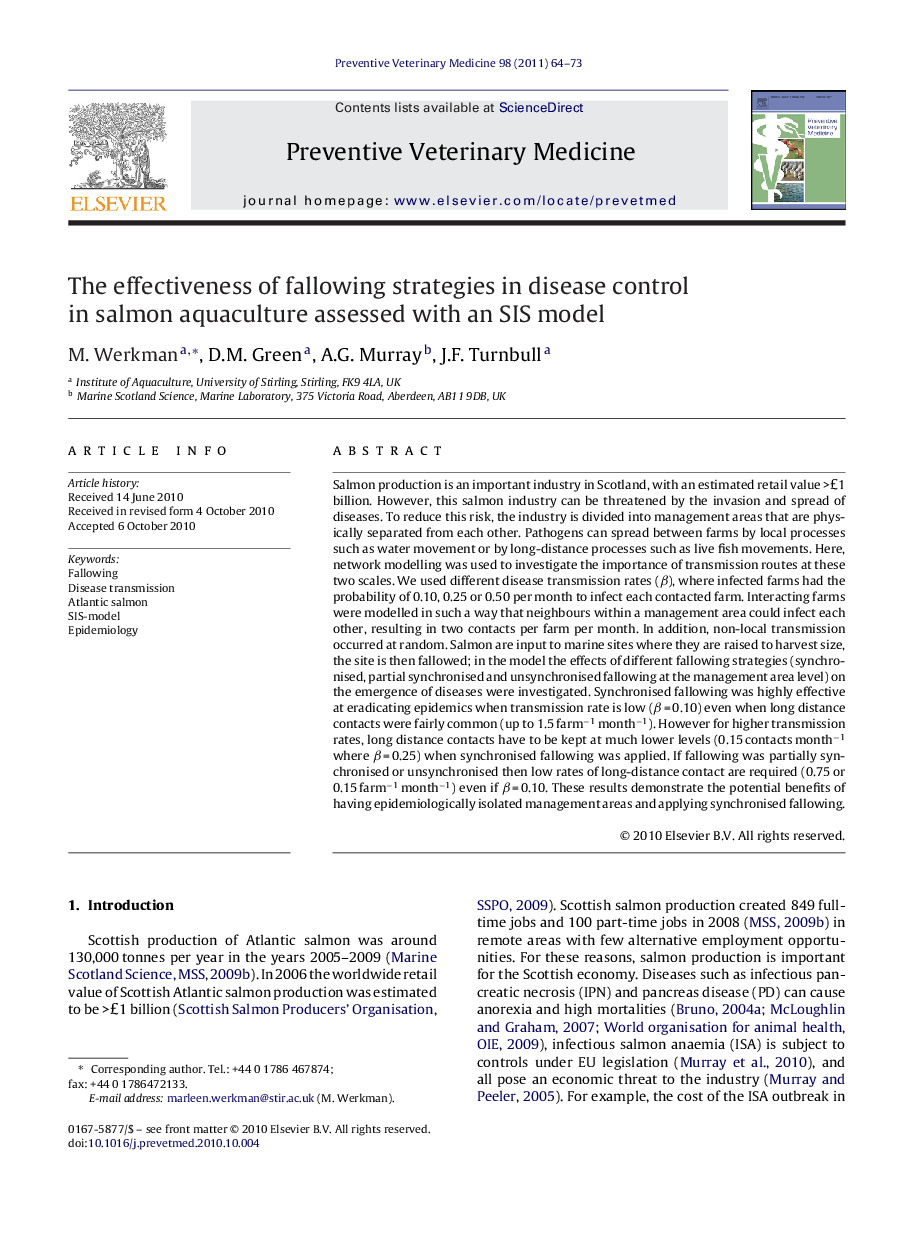| کد مقاله | کد نشریه | سال انتشار | مقاله انگلیسی | نسخه تمام متن |
|---|---|---|---|---|
| 2453052 | 1110068 | 2011 | 10 صفحه PDF | دانلود رایگان |

Salmon production is an important industry in Scotland, with an estimated retail value >£1 billion. However, this salmon industry can be threatened by the invasion and spread of diseases. To reduce this risk, the industry is divided into management areas that are physically separated from each other. Pathogens can spread between farms by local processes such as water movement or by long-distance processes such as live fish movements. Here, network modelling was used to investigate the importance of transmission routes at these two scales. We used different disease transmission rates (β), where infected farms had the probability of 0.10, 0.25 or 0.50 per month to infect each contacted farm. Interacting farms were modelled in such a way that neighbours within a management area could infect each other, resulting in two contacts per farm per month. In addition, non-local transmission occurred at random. Salmon are input to marine sites where they are raised to harvest size, the site is then fallowed; in the model the effects of different fallowing strategies (synchronised, partial synchronised and unsynchronised fallowing at the management area level) on the emergence of diseases were investigated. Synchronised fallowing was highly effective at eradicating epidemics when transmission rate is low (β = 0.10) even when long distance contacts were fairly common (up to 1.5 farm−1 month−1). However for higher transmission rates, long distance contacts have to be kept at much lower levels (0.15 contacts month−1 where β = 0.25) when synchronised fallowing was applied. If fallowing was partially synchronised or unsynchronised then low rates of long-distance contact are required (0.75 or 0.15 farm−1 month−1) even if β = 0.10. These results demonstrate the potential benefits of having epidemiologically isolated management areas and applying synchronised fallowing.
Journal: Preventive Veterinary Medicine - Volume 98, Issue 1, 1 January 2011, Pages 64–73